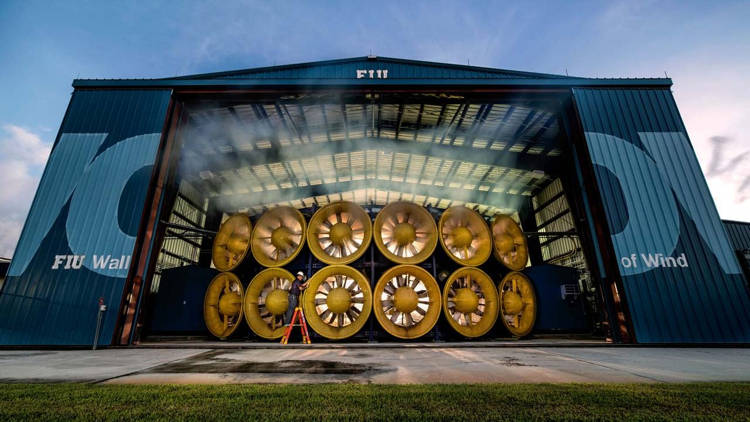The Wall of Wind is the world’s largest wind simulator, an impressive contraption capable of generating winds of up to 157 miles per hour (70m/s), comparable to those registered during category 5 hurricanes.
In order to better protect against the devastating force of hurricanes, you first have to study them and test various materials against the powerful winds they generate. With this idea in mind, engineers at the International Hurricane Research Center (IHRC) and College of Engineering and Computing (CEC) at Florida State University spent 15 years building and perfecting the Wall of Wind, an impressive installation capable of replicating hurricane-force winds.

Photo © Florida International University
It all started in 2005, with two powerful wind turbines that were able to generate winds of up to 53 m/s, but as the need to simulate more powerful air currents increased, so did the power of the Wall of Wind. Today, the installation consists of a total of 12 giant fans capable of generating winds of up to 70m/s. For reference, a study showed that trees start to break at wind speeds of 42m/s, regardless of age, diameter, or elastic properties.
According to the Florida State University website, “the Wall of Wind facility can test to failure full-sized structures such as site-built or manufactured housing and small commercial structures”.
Thanks to an integrated water-injection system, the Wall of Wind is capable of simulating horizontal wind-driven rain, allowing engineers to test structures and materials against both wind and rain damage caused by hurricanes.
Small buildings can be placed on a turntable in front of the Wall of Wind, so that they can be hit from all angles to detect possible weak spots. Thanks to their variable frequency drives, the fans can be ramped up to a variety of wind speeds, giving engineers a better understanding of how various designs and materials handle powerful hurricanes.
In the beginning, the Miami-based Wall of Wind was capable of replicating hurricanes of categories 1 through 4, but the current installation is reportedly capable of simulating hurricanes like Katrina and Andrew, which rank as category 5 according to the Saffir–Simpson Hurricane Scale.






